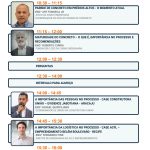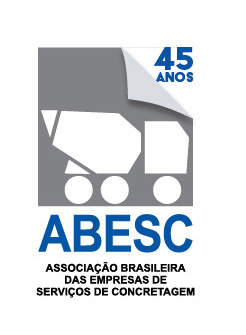
Stopping Nonpoint-Source Pollution
In Columbia, MO, the Public Works Department received a Clean Water Act 319 grant for stormwater improvements to reduce nonpoint-source pollution into the creeks and streams. Several projects were part of the grant that Boone County had received from the Missouri Department of Natural Resources through the EPA funding.
StormCon 2017 will be held in Bellevue, WA at the Meydenbauer Convention Center, Aug. 27–31. Save $65.00 and register now to earn educational credits; learn in sessions, workshops, and interactive tour formats; network with other attendees from around the world; and see technology from 185 exhibiting companies.
Erin Keys, an engineer with the Columbia Public Works Department, says the city acted as a consultant on the grant.
“Our portion was to retrofit an industrial site with some stormwater BMPs [best management practices],” she says. “We chose to retrofit our public works operations facility here in town. Our phase 1 projects included a bioretention basin, a bioswale, and a rain garden. The phase 2 projects were to retrofit an existing detention basin.”
Here’s a video to show construction took place:
The Columbia Public Works Department needed to expand the parking area for its employees and construct a detention basin to address the additional water coming off of the new parking lot.
In the 1980s, stormwater design focused on major detention for significant storm events, so the detention basin that was constructed at that time was large enough to hold back significant amounts of water from large rain events, says Keys. However, water from less significant events would flow right through the large pipe. The detention basin needed to be smaller to address water quality.
“We wanted that detention basin work a little bit harder and decided to convert that detention basin into an underground detention facility and porous pavement,” Keys says.
The area was excavated and a layer of rock was laid down, followed by filter fabric.
Next, 1,000 Atlantis D-Raintank Modular Rainwater Storage System units were installed. Keys likens the tanks to a “fancy milk crate. It’s mostly void space, but it’s got structural stability so that when you cover it with the fabric and the rock, we’re able to drive cars over the top of the pavement,” she says.
For porous pavement, PaveDrain—a permeable articulating concrete mat that integrates the reservoir to maximize onsite stormwater capacity during extreme storm events—was chosen.
“I wanted to do some kind of porous pavement,” Keys says of the project’s elements. “I like the idea of PaveDrain, that you could lay it in mats. Most paver systems have individual blocks you can lay. This you can lay down in a complete mat and so the installation seems easier.”
The product is designed to improve the typical storm hydrograph, increase environmental performance, and reduce stormwater infrastructure costs. PaveDrain mats can be preassembled in a variety of configurations.
The PaveDrain system enables a vertical infiltration path, recharging local groundwater and reducing first-flush pollutants by filtering out suspended sediments.
“What’s interesting about the PaveDrain blocks is we were able to place them in mats,” says Keys. The mats were delivered off semitrucks and placed on the appropriate place on the lot. The pieces were interlocked like a puzzle.” The pavement will stay in place despite turns and other movements by vehicular traffic, she adds.
“The Atlantis D-Raintanks are used for the detention part with the PaveDrain on top, with the idea that the water would infiltrate through the PaveDrain into the Atlantis tanks and be filtered, then stored for 48 hours and released slowly over that 48-hour period,” Keys says.
The water infiltrates through the spaces along the edge into the rock below, she says. Each block has an arch to provide strength and stormwater runoff storage capacity. The system features a monitoring port for visual indication of how much stormwater is being stored.
The second phase of the project was completed in June 2014. The project’s first phase, a bioretention basin, has been monitored by the county, with positive results. For many of the pollutants being studied, there has been between 90 and 99% removal. Some pollutants have yielded removal rates of 40–70%, which Keys notes is “still significant. It’s good to know we’re removing those pollutants from the runoff before they get to our creeks and streams.”
Keys says she anticipates the PaveDrain system will handle the winter well.
“During the last couple of years, we’ve had some pretty good snowy winters,” she notes. “One of the selling points is that the spaces between the blocks in the PaveDrain are such that you don’t have to fill those spaces, so it can take a lot more water between the spaces. That helps with rain but it also helps with snow. So we’re hoping we won’t need to plow it as much because that’s going to filter through those pavement blocks.
“I don’t think plowing is going to be an issue,” she adds. “They usually hold their blade up above the pavement anyway, so I think because of the margin above the pavement, it shouldn’t hurt any of the blocks. We’ll have to take a wait-and-see approach if we’re going to need any salt.”
Keys also believes that the block spaces will stay open and the blocks will hold the heat longer to allow the water to infiltrate between them.
One challenge that occurred during the construction phase involved the equipment used to do the installation.
“When we were planning to lay the mats down, we were looking at the equipment we had available,” she says. “The ideal equipment would be a crane to set the mats, but we didn’t have that available. So we were using a piece of equipment where we had to roll out back to set the mats.”
She says if her department had to do it all over again, there would be more attention given to how the mats were staged.
“We would have staged them in a different way, because one of the things you have to do before you lay the mat down is use a plate compactor to compact the rock,” Keys says. “We would have staged it in such a way that we could have plate-compacted a whole row or column so we could set all of those mats and come back and plate-compact the next row.
“As it was, we had to do some plate compaction, set a mat, do some plate compaction, set a mat. That was an error on our part as far as planning.”
Post-installation, Keys notes that the system is working well as expected, with the underground detention system filling up when it rains.
Fonte: http://foresternetwork.com







